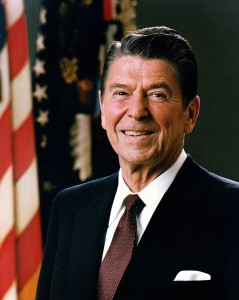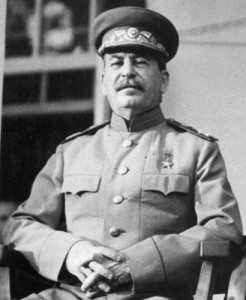The Presidential Election is still a year away and, lamentably, albeit predictably, the political mud is already flying in all directions. But if you think the partisanship is already plumbing new depths, you’d be wise to think again.
In fact, it’s hard to imagine anything that could equal a study of the psychological motivations of political conservatives published during the 2004 Presidential campaign in the American Psychological Association’s Psychological Bulletin. Let me remind you about what it had to say:
The study was the work of Associate Professor Jack Glaser and visiting Professor Frank Sulloway of the University of California Berkeley, Associate Professor John Jost of Stanford University’s Graduate School of Business, and Professor Arie Kruglanski of the University of Maryland at College Park.
And they concluded the motivations that mark political conservatives are ‘fear and aggression; dogmatism and intolerance of ambiguity; uncertainty avoidance; need for cognitive closure; and terror management.’

Official Portrait of President Reagan, 1981, by White House Photographic Office. Licensed under Public Domain via Wikimedia
This bizarre list might lead one to conclude that the folks actually suffering from ‘fear and aggression, dogmatism and intolerance of ambiguity, uncertainty avoidance, need for cognitive closure, and terror management’ were the researchers who put this bizarre list together.
Surely only the deranged could fail to recognise the vast moral and philosophical gulf between folks who operate within the framework of the American political system, and murderous tyrants like Hitler, Stalin, Castro, and Mussolini.
In the context of 21st-Century American politics, President Reagan was unashamedly conservative, as is his ardent admirer Rush Limbaugh. He had a laissez–faire approach to the economy and generally took a constructionist approach to the constitution.
Yet, from the perspective of 19th and early-20th century political thought, both Reagan and Limbaugh would be classified as liberals. Political labels tend to be a movable feast.
At no time in world history, however, would mass murderers and torturers like Hitler, Mussolini, Stalin, and Castro have been classified as ‘conservative’ in the American or any other sense of the word. Nero, Caligula, Vlad the Impaler, and Ivan the Terrible pale in comparison with them. Aside from being mass murderers and torturers, Hitler, Mussolini, and Stalin were (‘are’ in the case of Castro) radicals whose vision was to stand the social and economic order on its head. These men have nothing whatsoever in common with Reagan, who was plainly devoted to preserving traditional American capitalism. Ditto Limbaugh.
What’s more, the researchers’ apparent assumption that some vast ideological gulf exists between Hitler and Mussolini on the one hand and Stalin and Castro on the other is also far from the mark.

Joseph Stalin,1943 by U.S. Signal Corps photo. Licensed under Public Domain via Wikimedia. This is a cropped image of Stalin during the Tehran Conference. In the full photo he is sitting beside Franklin D. Roosevelt, and Winston Churchill on the portico of the Russian Embassy.
Stalin and the Soviet Communist Party believed the state should control all economic, political, and social activity through its ownership of the means of production. Hitler and Mussolini didn’t care who owned the means production, providing the owners did what the dictators told them.
The study was a particularly baroque example of a political hatchet job. But the Left has no monopoly on the genre. The Right is similarly inclined, though rarely is it so outrageously inventive. Nor does it have same degree of access to the media as the Left.
The sad thing about the mud-slinging of this sort is that it debases the election process, and further undermines the man in the street’s already fragile trust in the body politic. GPH✠



Indeed, watch out for mud – and whoever provided Petrus with this information was apparently slinging quite a lot of it. I wanted to see what the study actually said, so I found it here .
Far from being subjects of the study, Reagan and Limbaugh are not mentioned in it, not even once. Hitler and Mussolini are not subjects either, but they are used as examples of conservatism of the right, while Stalin and Castro are used as examples of conservatism of the left.
The terms “right” and “left” as used in politics, by the way, did not originate with Stalin but rather came from the arrangement of the Assemblée Nationale in 1789 at the beginning of the French Revolution.
And rather than a “vast ideological gulf” between Stalin and Hitler, the researchers posit that their positions were actually quite similar in many respects.
The only outrageous invention I noticed is the way this study was outrageously misinterpreted by your source, and such misinterpretation certainly does debase the election process.
(P.S. If you would like to know more about the right’s access to the media, check out this nonpartisan article: http://www.businessinsider.com/what-your-preferred-news-outlet-says-about-your-political-ideology-2014-10. It shows where people of all political leanings go to get their news.)
I should clarify that this is not my article. I posted it on behalf of the Rector; this is his most recent column from the St Stephen’s Newsletter. Normally when I post these articles, I change the attribution—which I will update now, so that others will realize who the actual author is. I’m posting this comment here so that LaVonne will realize why the attribution has changed. (There also seems to be a problem with the way our web site interpreted your first link, so I’ll see if I can correct that.)
Thank you for your comments.